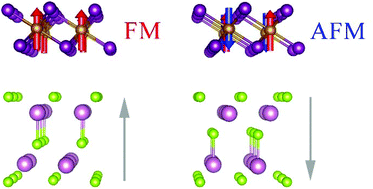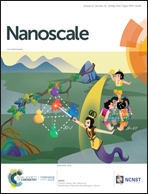Valence mediated tunable magnetism and electronic properties by ferroelectric polarization switching in 2D FeI2/In2Se3 van der Waals heterostructures†
Abstract
Exploring two-dimensional (2D) materials with both ferromagnetic and ferroelectric properties is scientifically interesting and of great technical importance to numerous functionalities in nanoscale devices. In this work, we have demonstrated a strong magnetoelectric coupling that appeared in the 2D FeI2/In2Se3 van der Waals heterostructure. FeI2 layers undergo a transition from ferromagnetic to antiferromagnetic by reversing the direction of ferroelectric polarization. First-principles calculation predicts a new magnetoelectronic coupling mechanism which is completely different from the Dzyaloshinskii–Moriya (DM) effect in multiferroic materials. Because of the polarization discontinuity at the interface, the valence states of Fe ions change between +2 and +3 for two different polarization directions, leading to the magnetic interaction variation between the direct exchange and I ion mediated superexchange. Moreover, metallic 2D electron gas (2DEG) transfers from the surface of FeI2 to In2Se3 when the polarization reverses, which induces the spin polarization of the heterostructure varying from 93% to 0%. Our work is the first realization of manipulation magnetism by an electric field in full 2D van der Waals heterostructures.

- This article is part of the themed collection: Editor’s Choice: Computational studies of nanomaterials for energy, catalysis and electronics


 Please wait while we load your content...
Please wait while we load your content...